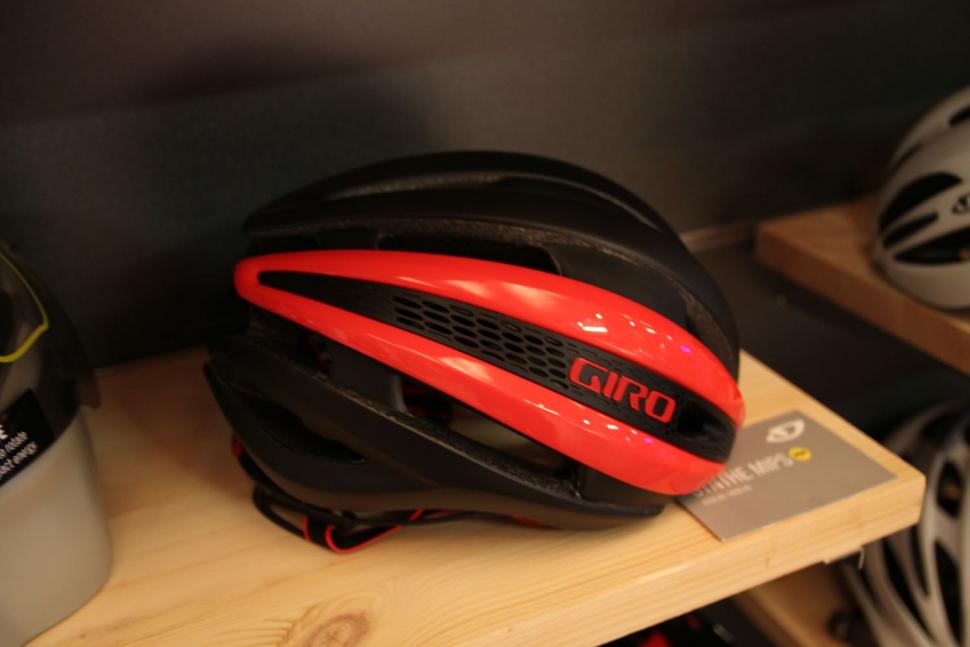- News
- Reviews
- Bikes
- Components
- Bar tape & grips
- Bottom brackets
- Brake & gear cables
- Brake & STI levers
- Brake pads & spares
- Brakes
- Cassettes & freewheels
- Chains
- Chainsets & chainrings
- Derailleurs - front
- Derailleurs - rear
- Forks
- Gear levers & shifters
- Groupsets
- Handlebars & extensions
- Headsets
- Hubs
- Inner tubes
- Pedals
- Quick releases & skewers
- Saddles
- Seatposts
- Stems
- Wheels
- Tyres
- Tubeless valves
- Accessories
- Accessories - misc
- Computer mounts
- Bags
- Bar ends
- Bike bags & cases
- Bottle cages
- Bottles
- Cameras
- Car racks
- Child seats
- Computers
- Glasses
- GPS units
- Helmets
- Lights - front
- Lights - rear
- Lights - sets
- Locks
- Mirrors
- Mudguards
- Racks
- Pumps & CO2 inflators
- Puncture kits
- Reflectives
- Smart watches
- Stands and racks
- Trailers
- Clothing
- Health, fitness and nutrition
- Tools and workshop
- Miscellaneous
- Buyers Guides
- Features
- Forum
- Recommends
- Podcast
TECH NEWS
Giro and Bell embrace MIPS for 2016 with updated cycling helmet ranges
MIPS, a distinctive yellow plastic liner added to a cycling helmet that is claimed to reduce rotational forces in certain impacts, is set to become standard on all cycling helmets, according to Giro and Bell.
At a gathering of bike brands by UK distributor Zyro in London last week, Giro and Bell presented 2016 helmet ranges which feature a lot more MIPS enhanced helmets and most critically, at lower prices than ever before.
Bell and Giro showed a vastly increased MIPS range of helmets for 2016, with over 30 helmets across the two brands. For now MIPS remains a choice over a regular non-MIPS helmet. It remains to be seen if MIPS will become the only option on helmets in the next couple of years, but speaking to the two brands, it's clear they see MIPS becoming standard very soon.
MIPS still commands a premium over regular helmets, but the price gap has narrowed, and it's likely to continue in that direction.
Giro 2016
Giro first launched the Synthe MIPS at the 2015 Tour de France, and it has added a MIPS option to most helmets in its 2016 range. The 2016 Synthe is available in a huge range of colours and costs £194.99 for the regular version and £224.95 with MIPS.
This is the Savant and it costs £69.99 or £89.99 with MIPS. It’s a smart looking helmet with 25 wind tunnel tested vents and a Roc Loc 5 retention system. It’s available in five colours for the standard version, and two if you want MIPS.
One of Giro’s most affordable road cycling helmets is the Foray, costing £49.99 or £69.99 if you want MIPS. The helmet takes styling inspiration from the top-end Synthe with 21 vents and a Roc Loc 5 retention system. It’s available in a raft of colours and three sizes.
The cheapest MIPS helmet is the Revel. It costs £54.99 with MIPS and £39.99 without MIPS. The Revel is a universal fit with an Acu Dial retention system, 22 vents to keep your head cool and a removable snap-fit visor.
The women’s range includes the Sonnet, with MIPS for £89.99 or £69.99 without. The helmet has 25 vents and Roc Loc 5 retention system and is available in two sizes.
The Saga brings the price down to £69.99 for MIPs or £49.99 without. It’s styling is based on the Synthe, especially around the back where it looks very similar. There are 22 vents to keep your head cool and Roc Loc 5.
Giro’s most affordable women’s cycling helmet with MIPS is the Verona, coming in at £54.99. The version of the Verona without MIPs is £39.99. The Verona is available in one size with a universal fit design, with details including 22 vents, snap-fit visor and reflective rear decals.
Bell 2016
Not to be left out, Bell has also introduced MIPS to lower priced helmets in its range, starting with the cheapest, the Draft. With MIPS, it costs £54.99, and without MIPS it costs £39.99. The helmet has an ErgoDial retention system, weighs a claimed 270g (292g with MIPS) and is also available in Bell’s Joy Ride women’s collection, where it’s called the Tempo. The main change is a different choice of colours and smaller sizing.
The Gage was unveiled with a MIPS makeover at the 2015 Tour de France. With MIPS, it costs £149.99, and without it’s £124.99. The Gage comes in three sizes, weighs a claimed 243g with MIPS (221g without) and has features such as an Internal Roll Cage, TAG Fit System, X-Static padding and reflective decals.
Another interesting new model is the Hub, an urban helmet featuring MIPS technology and a host of features designed for urban commuting. Bell saw that many city commuters were wearing its skater-style helmets, so with the Hub has taken that as the starting point but added ventilation and other useful features, such as the clip for an LED rear light.
David worked on the road.cc tech team from 2012-2020. Previously he was editor of Bikemagic.com and before that staff writer at RCUK. He's a seasoned cyclist of all disciplines, from road to mountain biking, touring to cyclo-cross, he only wishes he had time to ride them all. He's mildly competitive, though he'll never admit it, and is a frequent road racer but is too lazy to do really well. He currently resides in the Cotswolds, and you can now find him over on his own YouTube channel David Arthur - Just Ride Bikes.
Latest Comments
- wtjs 3 sec ago
I would have thought having his passenger lean across him would be even more dangerous than him filming it himself...
- mdavidford 12 min 6 sec ago
Shops are so last century - the future is all about analysing your brainwaves and just sending you what you want before you ever know you wanted it.
- BikingBud 31 min 8 sec ago
But could you retro fit an 8 track player?
- Surreyrider 36 min 6 sec ago
Good try. Won't work.
- Surreyrider 38 min 34 sec ago
More than six times over the legal limit? She's the winner here. Her punishment is insufficient.
- Smoggysteve 52 min 22 sec ago
Sram only have a foot in the market with regards to road bike abd mountain bike (and loose variations of) The rest of the bicycles sold around the...
- wtjs 2 hours 8 min ago
so my hands are near the brake levers...
- PRSboy 3 hours 46 min ago
I came here on a small boat from the Road Cycling UK forum after that croaked a few yrs ago.
- A V Lowe 4 hours 27 min ago
The huge problem is the misues of the term pavement - I've cycled & driven cars on pavements for the past 61 years - their legal status is ...




































Add new comment
2 comments
I've so glad the Giro Synthe added MIPS. It's certainly one of the most comfortable shells in my opinion, and frankly I'm not going to buy another helmet without MIPS now
Here was my review of the and a look at MIPS from a medical perspective if you are interested
http://www.titaniumgeek.com/gear-reviews/giro-synthe-mips-helmet-review/
IMG_2561 (1).jpg
Isn't the move towards rounder helmets an effort to reduce high neck injury risk when the "tails" of a road helmet catch on something. Does the light negate this risk reduction?
Lots of helmets have a rear light built in now. Surely this is a superior option.